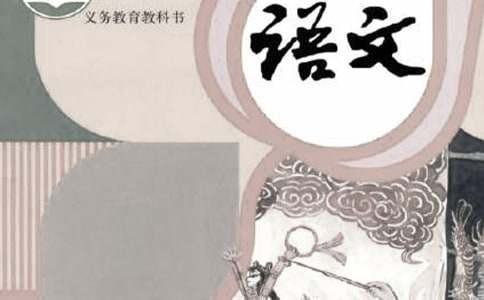- 相关推荐
西南大学《英语文体学引论》复习思考题及答案
(0099) 《英语文体学引论》复习思考题

I. Explain in brief the following terms. (10 points; in test it contains 10 terms)
1. stylistics
4. morpheme
7. register
10. syllable
13. form
16. lexical analysis
22. whispery voice
25. falsetto
28. standard words
31. literary words
34. elevation
37. litotes
40. periodic sentence
43. inverted sentence
46. repetition 2. style 5. phoneme 8. acoustic phonetics 11. general stylistics 14. content 17. syntactical analysis 23. breathy voice 26. common core words 29. non- standard words 32. extension 35. degradation 38. irony 41. loose sentence 44. antithesis 47. deviation 3. dialect 6. language 9. auditory phonetics 12. literary stylistics 15. phonological analysis 18. discoursal analysis 21. taboo 24. creaky voice 27. technical words 30. spoken words 33. specialization 36. metaphor 39. compound sentence 42. elliptical sentence 45. parallelism 48. cataphora 19. paralinguistic features 20. social dialect
49. progressive conjunction 50. field of discourse
II. Answer the following questions. (50 points; in test it contains 5 questions)
1. What is the relationship between form and content?
2. What are the differences between language and speech?
3. What is the methodology of stylistic analysis? What are the levels of stylistic analysis?
4. Define paralinguistic features. What are they?
5. What are the three ways of studying the sound of language?
6. What are the four typical meters in English poetry?
7. What is the relationship between sound and meaning?
8. What is the relationship between style and the choice of words, according to the stylisticians?
9. How many kinds of word meanings may be classified? And what are they?
10. What are the three basic components of the English vocabulary?
11. Functionally speaking, what are the four types of English sentences?
12. What are the conjunctions used in combining English sentences?
13. What are the gestures may be used in a casual conversation?
14. What are the three types of substitution? Can you give some examples?
15. What is the relationship between dialect and register?
16. Name at least five kinds of figures of speech in English.
17. Can you give some examples of rhetorical questions?
18. What are the stylistic features of the Bible?
19. What are the five kinds of reference in the English language?
20. What are the three factors of register?
21. Give examples to illustrate power relationship and solidarity relationship.
22. What are the non-linguistic features of casual conversation?
23. What are the linguistic features of the language of news reporting?
24 .What are the linguistic features of the language of advertisement?
25. What is the relationship between literary language and ordinary language?
III. Stylistic analysis (20 points):
1. Explain the connotative meaning of the italicized words or expressions in the following
sentences (12 points; in test it may or may not appear; it contains 3 words or expressions):.
1) Don?t trust her; she is a snake in the grass.
2) The enemy will attack us tomorrow morning, but we are still not well prepared. The
Damocles’ sword is hanging over us.
3) We have to consult him, you know, he is the real Titan in our class.
4) News from Pentagon today says …
5) She knows nothing about the cruelty of the world. She is a lily.
6) Hamlet, according to some psycho-analysis theory, is a character who has the
Oedipus complex.
7) He is a wolf in sheep?s clothing. Don?t believe what he says.
8) The doctor told him it is not cancer, however, it is only a white lie.
9) He is always ready to help people when they are in need. He?s a real Robin Hood.
10) Their policy is all sticks and no carrots.
11) 0China never stands on the side of Chauvinism.
12) Children are flowers of our country.
2. What possible social relationships exist between the participants in the following
sentences? (12 points; in test it may or may not appear)
1) Excuse me, could you tell me the right time, please?
2) What time is it, please?
3) What? the time?
3. Indicate what kind of figures of speech is used in the following examples? (8 points; in
test it may or may not appear; it contains 2 items)
The young hunter was as strong as a lion.
Life is but a brief candle.
from the cradle to the grave
Many hands make light work.
She?s as old as a mountain.
A victorious defeat
He is a fool. He never knows where his personal interest lies. His whole heart is concerned about the interest of other people.
Belinda smiled, and all the world was gay.
The drunkard loves his bottle better than his wife.
My love is a red, red rose.
4. Try to analyze the following sentence and point out its stylistic value (12 points; it may
or may not appear in test; if it appears, it contains one sentence)
1) It is a truth universally acknowledged that a single man in possessio西南大学《英语文体学引论》复习思考题及答案n of a fortune
must be in want of a wife. (J. Austin. Pride and Prejudice)
2) I came, I saw, I conquered. (Julius Caesar)
3) O, my luve is like a red, red rose
That?s newly sprung in June;
O, my luve is like the melodie
That?s sweetly play?d in tune.
(Robert Burns, A Red, Red Rose)
4) A grief ago (Dylan Thomas)
5) “Don?t be such a harsh parent, father!”
“Don?t father me!”
(0099) 《英语文体学引论》复习思考题答案
I. Explain in brief the following terms (10 points; in test it contains 10 terms):
1. stylistics: the study or the investigation of style.
2. style: the linguistic habit of a particular person(s) or characteristic of typical situations.
3. dialect: a subtype of language which may be determined by geographical locality or
particular social groupings.
4. morpheme: the smallest unit in a language that carries meaning.
5. phoneme: the smallest sound unit in a specific language capable of semantic distinction.
【西南大学《英语文体学引论》复习思考题及答案】相关文章:
大学英语精读教学的文体学视角04-30
文体学在大学英语教学中的运用04-30
文体学在大学公共英语写作教学中的应用04-27
西南大学秋季特殊教育概论标准答案11-28
从文体学的角度探讨法律英语的偏离及其原因04-28
西南大学排名05-01
文体学在商务英语口语教学中的应用04-30
有趣的思考题03-20
介词短语的文体功能与大学英语写作04-27
文体分析在大学英语综合课中的应用04-27